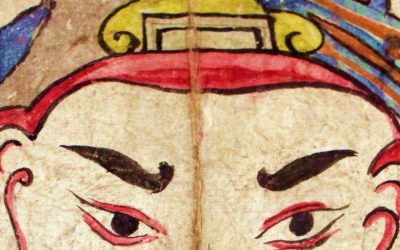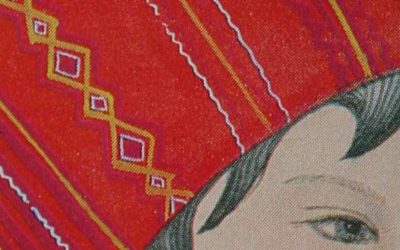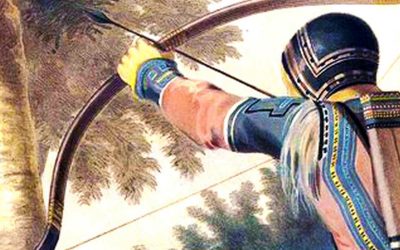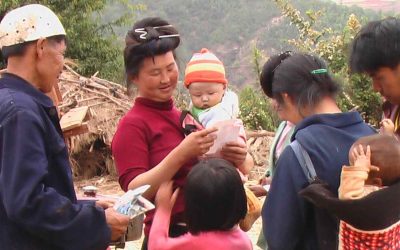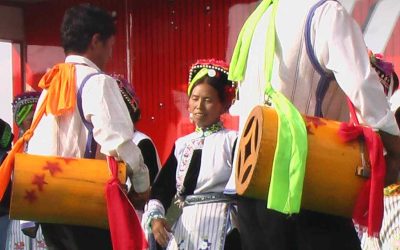The monasteries of Tibet- the soul of the land
One of the most charismatic aspects of Tibetan culture is its monasteries. Mention Tibet to anyone, at least in the West, and they will immediately associate that word with the monasteries and their monks. Those great buildings that are then encountered along the journey, and the monks that inhabit them, are one of the best examples of the mysterious feeling that Tibet provides.
This is not a new fact, since the first travelers who wrote about Tibet, its monasteries are one of the subjects that can never be missed. That is why we bring below some insights from the article that Sarat Chamdra das, the controversial Tibet expert, wrote in Journal of the Asiatic Society of Bengal in 1905.
The land of the monasteries
Tibet is the land of monasteries. Her history chiefly comprises records of the establishment of monasteries and temples and their endowments by the State, chiefs and nobles of the country, commencing from the middle of the 7th Century A.D., to the 18th Century.
There are eighteen different Buddhist sects, out of which four are widely distributed all over higher Asia including Tibet, Mongolia and Western China. Of these four sects three, viz., Sakya, Dik-pa and Ñing-ma have the red-cap, which they use during religious services only, to distinguish them from the remaining 15 sects. The fourth which is the reformed sect and therefore the purest of all, has become dominant since the middle of the 17th century. Its monks use the yellow-cap. The Dalai Lama is the head of this Church.
Number of monasteries and monks
In the official register at Lhasa, in 1882, the total number of monasteries belonging to the Yellow-cap Church was 1026 with 491,242 monks. Out of this number, 281 monasteries belonged to the provinces of U and Tsang which constitute Tibet proper, 150 to the provinces of Nyang, Lhobrag and Kong-po; 27 to Upper Kham; 154 to Lower Kham and 414 to Ulterior Tibet which is called Poi-Chen or greater Tibet. In this list village-monasteries and Mani-lhakhang (prayer-wheel temples) have not been entered.
The number of monasteries belonging to the three red-cap sects, is a little more than the total of the Yellow-cap Church institutions. This would bring the total of the monasteries of all the 18 sects to over 2,500 and that of the monks to about 760,000.
In Tibet every third boy in a family, as a rule, is sent to the monastery, in consequence of which the male population of the country may be roughly estimated at 2.4 to 3 millions.
The lamas
The Yellow-cap Church Lamas take the vow of celibacy, which circumstances precludes them from keeping female company. But many among them while residing abroad seldom conform themselves to monastic discipline.
The miserable pittance which the monks of even the State- supported monasteries get for their subsistence, hardly exceeds three Tanka, i.e.,1,5 Re a month. Owing to this, about one-fifth of the monks in a monastery generally turn into traders. Many among them become mendicant priests and roam over the country in quest of the necessaries of life. These are called Tapa or monastery-boys. The agricultural population often regard them with dread for their irregular habits of life and clamouring for alms.
There are few convents in Tibet and the number of nuns (Tsûnmo) in them is very small. While the largest monastery contains 10,000 monks, the largest convent can hardly count 100 nuns for its inmates. The nuns of Tibet have the reputation of being pure as only the most religiously disposed among the fair sex betake themselves to monastic life. The red-cap Lamas generally keep concubines called Ani who often dress as nuns.
Sharing wives marriage
Marriage being the exclusive privilege of the eldest brother in a landholder’s family, the younger brothers seldom care to share the bed of the house-wife with him which the custom of the country allows. They generally keep concubines. It is true that there is marriage among the rich cultivators and herdsmen, but the majority of the common people make family in wedlock either singly or jointly. Thus, side by side with polyandry, concubinage has become a popular institution in Tibet. Out of 100, 99 people keep concubines. This explains the question as to what becomes of the majority of the female population who remain unmarried. The Tibetan male is generally less jealous than the Tibetan female which circumstance has given rise to the formation of that much despised relationship called Nyamdo-pûn, i.e., brotherhood in wedlock versus brotherhood in matrimony which is polyandry pure and simple.
The main monasteries of Tibet are the three great monasteries of the Gelupta sect located on the outskirts of Lhasa, Drepung, Sera and Gamdem; Tashilupo in Shigatse, seat of the Panchen Lama; Samye, which was the first to be erected in Tibet; and Sakya, the center of power during the 13th and 14th centuries.
There are many other interesting monasteries and a visit to each provides the sensitive traveler with new aspects of Tibetan religion and culture. A visit to Tibet is, in part, a visit to its monasteries.
Last posts
Mask of the Protector Palden Lhamo
Mask of the Protector Palden Lhamo Palden Lhamo is one of the main protector deities of Tibetan Buddhism. Among her many roles, she is the special protector of the city of Lhasa, the Gelugpa order of Tibetan Buddhism, and the Dalai Lamas of Tibet. She was invited to...
«Dujie» (Initiation Rite) Masks of the Yao people
"Dujie" (Initiation Rite) Masks of the Yao people Popular among the Yao people in Wenshan and Honghe Prefectures, the Dujie masks are used for the ceremonies of the boys' rites of passage. The ceremony, performed for boys that are about fourteen years...
The headdress of the Jingpo women
The headdress of the Jingpo women The clothing style of the Jingpo people is rough and bold, It is possible that it reflects that past time when they were the masters of the frontier mountains, and caravans had to pay a tax to pass through their lands. Men of the...
Pictographic writing among the Evenki
Pictographic writing among the Evenki In Chi Zijian’s novel The Last Quarter of the Moon (English translation by Bruce Humes) there is a short story describing the creation of pictographs to write the Evenki language. “Shiban had two great loves: creating Evenki...
The Flowery Miao in Zhaotong
The Flowery Miao in Zhaotong As depicted by E. G. KEMP in The Face of China. New York. 1909. The prefectural town of Zhaotong was reached after passing through a dull plain, across which a piercing wind was blowing, which is characteristic of this district. It is an...
The Flood Myth, Shamans and the Sani Religion
The Flood Myth, Shamans and the Sani Religion We continue with the second chapter of Paul Vial “Los Lolos”, in which fragments dedicated to the myth of the flood and the activities of its shamans are particularly striking. CHAPTER II - RELIGIOUS TRADITIONS These...






